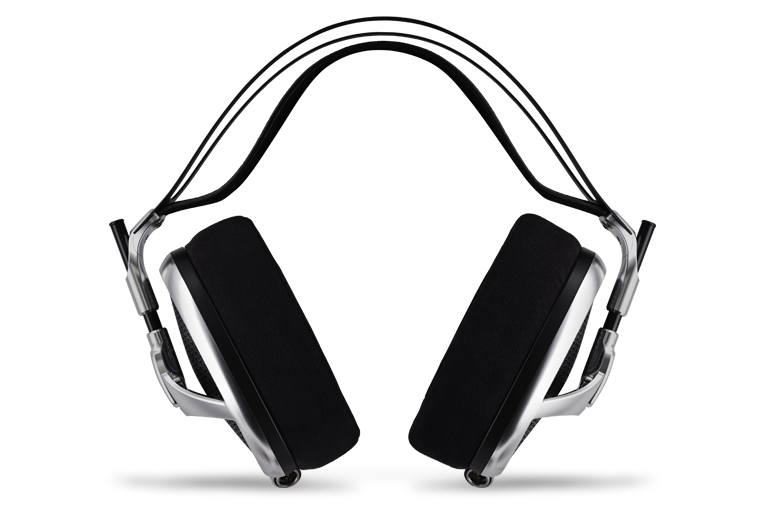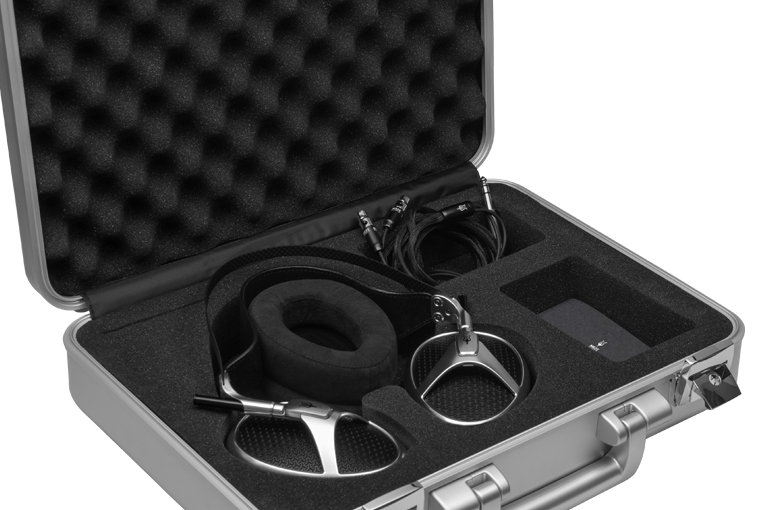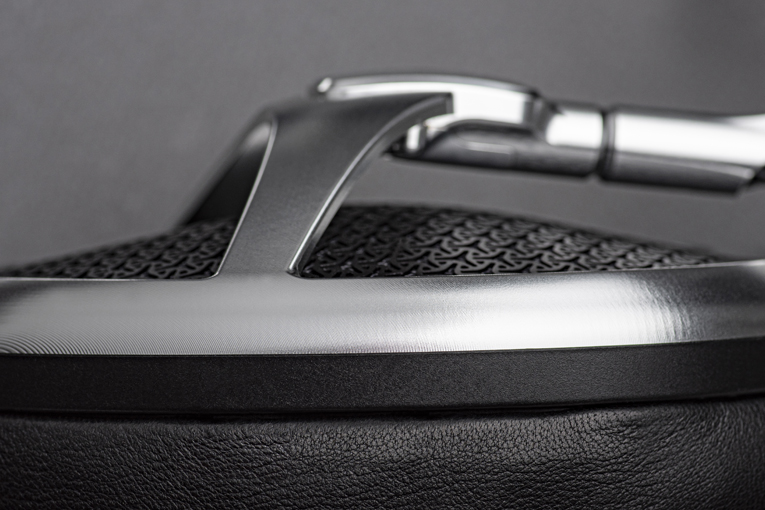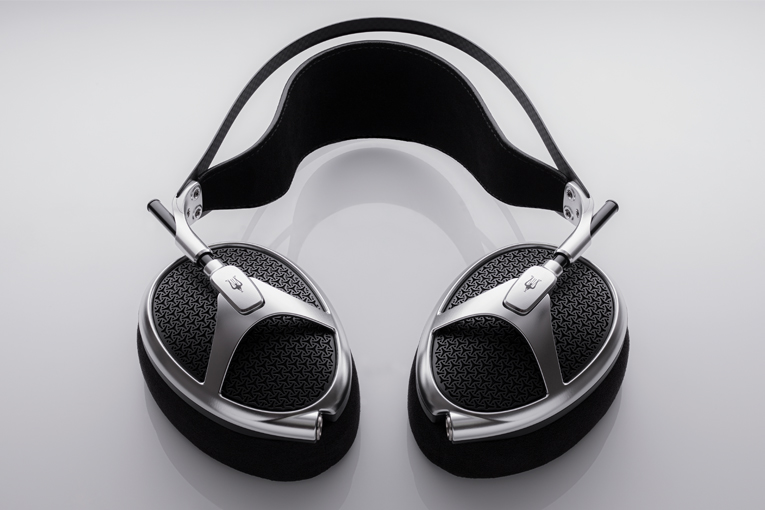Sound: 









Value: 









(Read about our ratings)
Measurements can be found by clicking this link.
 For the headphone world, the Meze Audio Empyreans—predecessor to the new Meze Elite headphones—were one of the biggest surprises of the last few years. The Empyreans cost about ten times as much as the company’s previous top-of-the-line model. Not only were the Empyreans Meze’s first planar-magnetic headphones; they were the first to use a radical new planar-magnetic technology with separate regions for bass and treble. To the best of my memory (and the limits of my tolerance for reading or watching most headphone reviews), every reviewer loved them.
For the headphone world, the Meze Audio Empyreans—predecessor to the new Meze Elite headphones—were one of the biggest surprises of the last few years. The Empyreans cost about ten times as much as the company’s previous top-of-the-line model. Not only were the Empyreans Meze’s first planar-magnetic headphones; they were the first to use a radical new planar-magnetic technology with separate regions for bass and treble. To the best of my memory (and the limits of my tolerance for reading or watching most headphone reviews), every reviewer loved them.
The new Elite headphones ($4000, all prices USD) are nowhere near as bold a leap—they’re priced just 33% higher than the Empyreans, and they look almost the same. Still, considering how much I liked the Empyreans, I was excited to hear the Elites.

But I was frustrated when I went to the company’s website to ferret out the differences between the Elites and the Empyreans. It took quite a while for me to figure out what changed—and it looks to me like the only significant difference is in the driver. All planar-magnetic drivers have some sort of polymer diaphragm laminated with a wire voice coil. In the Empyreans, it’s a Rinaro Isoplanar diaphragm that weighs a very light 0.16g. (Rinaro is the company that developed Meze’s unique planar-magnetic driver design.) In the Elites, it’s a Rinaro Parus diaphragm that’s the same size, but it weighs only 69% as much.
All other things being equal, the lighter diaphragm should make the driver more efficient and extend its high-frequency response, but the improvement seems mild: a 1dB increase in rated sensitivity (up to 101dB for the Elites) and an increase in high-frequency response of just 2kHz (up to 112kHz for the Elites). How important is this? I don’t know, because there’s no standardized method for measuring headphone frequency response above 20kHz, and Meze doesn’t specify the technique or parameters for the measurements—and of course, 112kHz is two-and-a-half octaves higher than anyone can hear.
The real magic of this driver apparently comes from its quasi-two-way design. The smaller part of the voice coil works as a tweeter; it’s in a circular shape, and it sits right in front of your ear canal. The larger part uses “switchback”-shaped coils, kind of like a road snaking up a mountain, to reproduce the bass. In the Empyreans, this design seemed to result in a wonderfully natural, full-sounding tonal balance that retains plenty of detail and delicacy in the treble.
The “running gear” of the Elites is pretty much the same as the Empyreans: lightweight, one-piece aluminum earpiece frames; tooled leather; and a carbon-fiber headband in a unique “winged” design that distributes the headband pressure more evenly.

Sadly, I had to return the sample of the Empyreans shortly after I finished my review, and I haven’t heard them since. But I do have my old review to refer to, and of course you can check the measurements using the link at the top of the review to see how the new model compares from a technical standpoint.
In the box
Meze offers you a choice of three oxygen-free copper cables: an 8.1′ (2.5m) cable with a 1/4″ (6.3mm) plug, a 3.9′ (1.2m) cable with a 1/8″ (3.5mm) plug, and an 8.1′ cable with a four-pin XLR connector for use with balanced-output amplifiers, which is the one I requested. On the headphone end, they’re all terminated with four-pin, locking mini-XLR plugs. Cables with 2.5mm and 4.4mm plugs and different internal construction are available on Meze’s website at prices ranging from $249 to $499.

The Elites include two sets of earpads. One is covered with Alcantara fabric, the other with Alcantara on the inside and leather on the face and on the outside. The two pads give somewhat different frequency responses, which you can see in the measurements. The pads are attached using the force of the driver’s magnets, so they’re easy to remove and replace.
The carrying case is a metal-sided briefcase—too bulky to be practical for airline travel, but certainly rugged and impressive.
Use
I’m looking at my reflection in a window as I write this, and noticing how colossal these headphones are. Yet I’m marveling at how light they are for their size, and how stable they are on my head despite a relatively light clamping force.
With a rated impedance of 32 ohms and a sensitivity of 101dB/1mW, the Elites present about the same load to an amplifier as a typical set of mass-market headphones. Although I could probably have driven them with my phone, I did all of my listening with one of two amplifiers: the Audio-gd NFB-1AMP or the Schiit Magnius.
Sound
What first grabbed me about the Elites was the full-sounding, natural tonal balance, which isn’t necessarily the norm with audiophile headphones. But what grabbed me just a few seconds later were the soundstaging and imaging. When I listened to Cécile McLorin Salvant’s version of “Sam Jones’ Blues” (Dreams and Daggers, 24-bit/96kHz FLAC, Mack Avenue / Qobuz), her voice was wonderfully imaged and clear, with little to no sibilance, no bloat, and no coloration of any sort I could detect. I loved the way the Elites portrayed the intimacy of the obviously small performance venue, and especially the way they imaged the drummer’s clicks of—something, the handles of his brushes perhaps—against the side of the snare drum. It felt like I was hearing him from about five feet away, and considering how this recording sounds, I’d guess maybe that’s how far the microphones were from his drums.

There was plenty of detail, but it wasn’t that “detail in your face” sound that a lot of audiophiles like. I’d call the sound “relaxed” because it was relaxing to listen to, but that would imply that the Elites sounded soft, which they didn’t.
Note that this was with the all-Alcantara pads, which I used at first just because they happened to be on the headphones. The part-leather pads have a mildly livelier sound. I liked the sound either way; with the part-leather pads, it was a little more aggressive. Fortunately, the pads are easy enough to change, so you can switch them out to suit your mood.
“Blind Love” from Lindsey Buckingham (24/44.1 FLAC, Reprise/Qobuz) is a mostly dry-sounding mix, apparently all close-miked or sampled instruments with reverb added, and I loved the way the Elites portrayed the sense of space—or as I should probably say, the “multiple senses of space” created when each instrument is panned to its own place and has its own distinct reverb added. I could easily hear all the detail in Buckingham’s dual acoustic guitar tracks, drums, and percussion without turning up the sound and without losing any of the bass. I didn’t have any complaints; I just wanted to listen more. And to me, that is the perfect description of what makes an excellent audio product.

The one complaint I voiced about the Empyreans was a slight sense of congestion in the vocals on Camille Thurman’s version of “September in the Rain” (Waiting for the Sunrise, 24/96 AIFF, Chesky), which I didn’t hear with the Focal Stellia headphones. Based on my review of the Empyreans, it seems the Elites sound quite similar, although I didn’t really hear that congestion with the part-leather pads. And maybe I heard a little extra sense of space, too—all of which leads me to believe maybe the Elites sound just a bit treblier than the Empyreans. The measurements will tell us for sure. With the all-Alcantara pads, the mids sounded softer and, yes, a little congested.
I did notice, though, that with the part-leather pads, Cecil McBee’s double bass sounded unusually full, with a little extra punch and, surprisingly, a somewhat softer presentation of upper harmonics. Of course, I don’t know what’s “right” with this recording; this might be an accurate rendition, considering he was standing close to the binaural microphone, which might exaggerate the contribution of the instrument’s f-holes.
As luck would have it, the next cut that came up in my foobar2000 playlist was “Noir,” from my new album with saxophonist Ron Cyger (Take2, 16/44.1 WAV, Outrageous8 Records)—and since I played, recorded, and mixed the bass, and approved the master, I do know what’s right. And because “Noir” jumps right in with a double bass intro, I knew in seconds. With the part-leather pads, the Elites sounded too full in the bottom end and gave the bass exaggerated punch. The Alcantara pads got a lot closer to my ideal, eliminating the added punch and introducing more definition in the bass notes. I didn’t get quite the upper-harmonic clarity I wanted, but honestly, I’m not sure that’s in the recording or the performance. The sense of space I heard with the Elites was great with either set of earpads—a little more focused with the part-leather ones, a little more ambient with the Alcantara pads, but nice either way. Hey, it’s all fake reverb, anyway.

So, good as the Elites sounded, there are definitely some interesting things going on between the different pads and in the bass and treble responses. But according to SoundStage! rules, and good general practice, I gotta finish this review before I measure them.
Comparisons
Sadly, I didn’t have anything on hand that’s even half the price of the Elite headphones, so for my comparison, I rounded up all the high-end open-back models I do happen to have: the Audeze LCD-Xes ($1199) with Dekoni Choice Suede earpads ($59.99), the HiFiMan HE6se’s ($1799), and the Sendy Audio Peacocks ($1499, review in the works).
On my favorite tonal balance test, Tracy Chapman’s “Fast Car” (Tracy Chapman, 16/44.1 FLAC, Elektra/Qobuz), I thought the leather pads made the Elites sound a bit better. There was just a hint of brightness in the voice, and it didn’t sound recessed, as it does with many headphones. But the Alcantara pads, while softer-sounding overall, seemed to introduce a little high-frequency peak somewhere that gave Chapman’s vocals a very subtle buzziness and also accentuated the hi-hat.
The Elites definitely achieved at least as good a sound as all the others. I’d say the Audeze/Dekoni cans were the only ones that were close; they had a similarly natural-sounding tonal balance, plenty of detail, and a very subtle emphasis on the mid-treble that made the vocals sound very slightly buzzy (although less so than with the Elites fitted with the Alcantara pads); I thought the bass and treble seemed somewhat boosted compared with the Elites.
The HiFiMan and Sendy models both had an emphasis that lent the sound more apparent detail but also made the tonal balance sound a bit less natural. With the HE6se’s, the sound was brighter overall, with the big 3kHz bump typical of most of HiFiMan’s high-end models. With the Sendys, there was more of an overall elevation of the mids that brought out the voice but de-emphasized the bass and upper treble, although I also thought I heard a little extra zip around 4 or 5kHz.
Conclusion
The Elites are pricey, but they’re indisputably among the best headphones you can buy, and you’ll be able to get good results with them using any amplifier. They do have two sonic profiles, depending on which earpads you use, so my guess is that most buyers will find themselves switching between the pads often—but that’s no big deal because it’s so easy to do.
. . . Brent Butterworth
Associated Equipment
- Amplifier: Audio-gd NFB-1AMP, Schiit Magnius.
- DAC-amplifier: iFi Audio Zen DAC.
Meze Elite Headphones
Price: $4000.
Warranty: Two years, parts and labor.
Meze Audio
Strada Iuliu Maniu 38
Baia Mare 430131
Romania
Email:
Website: www.mezeaudio.com





